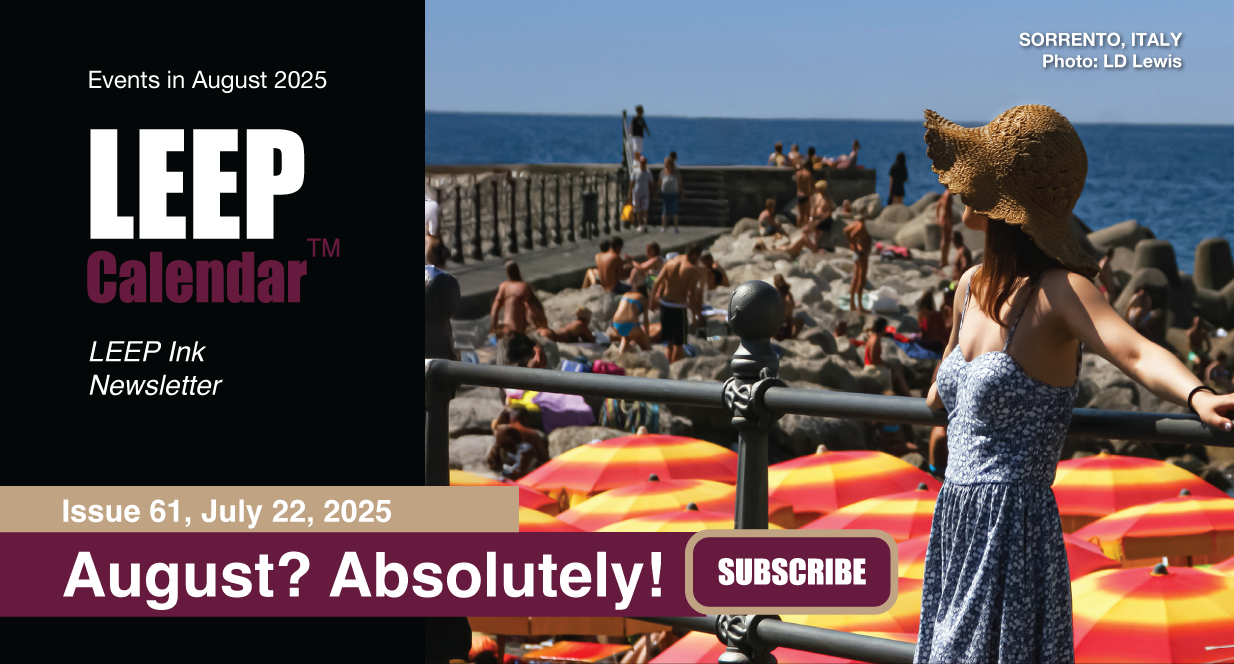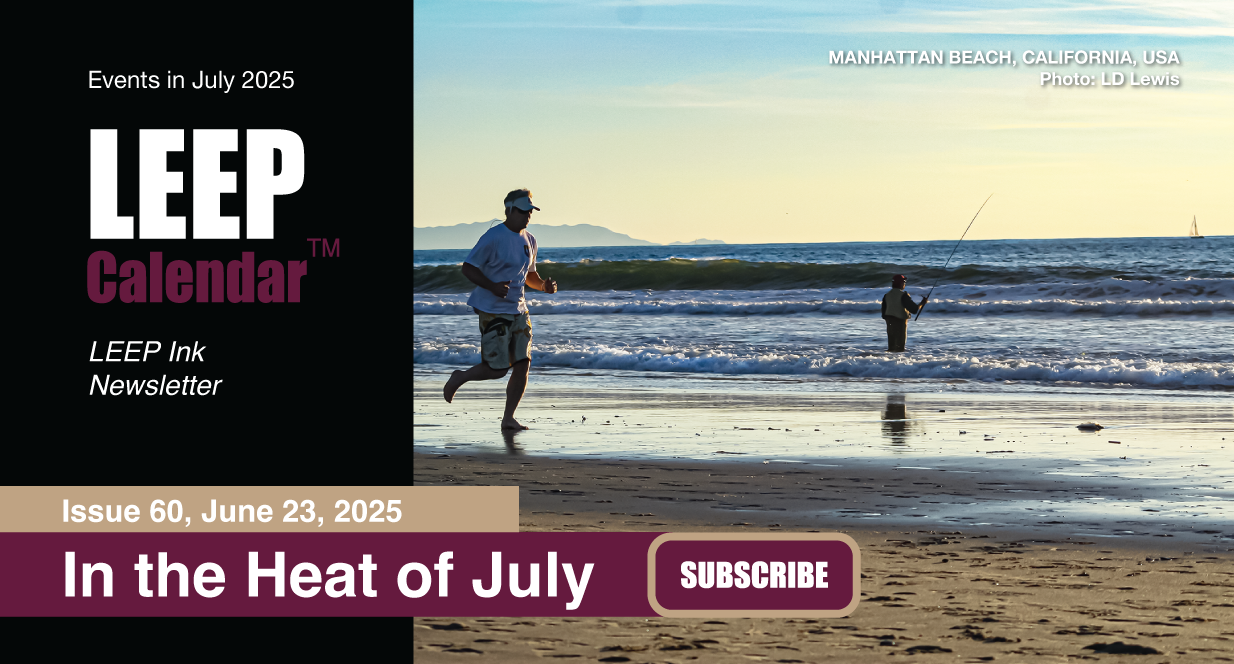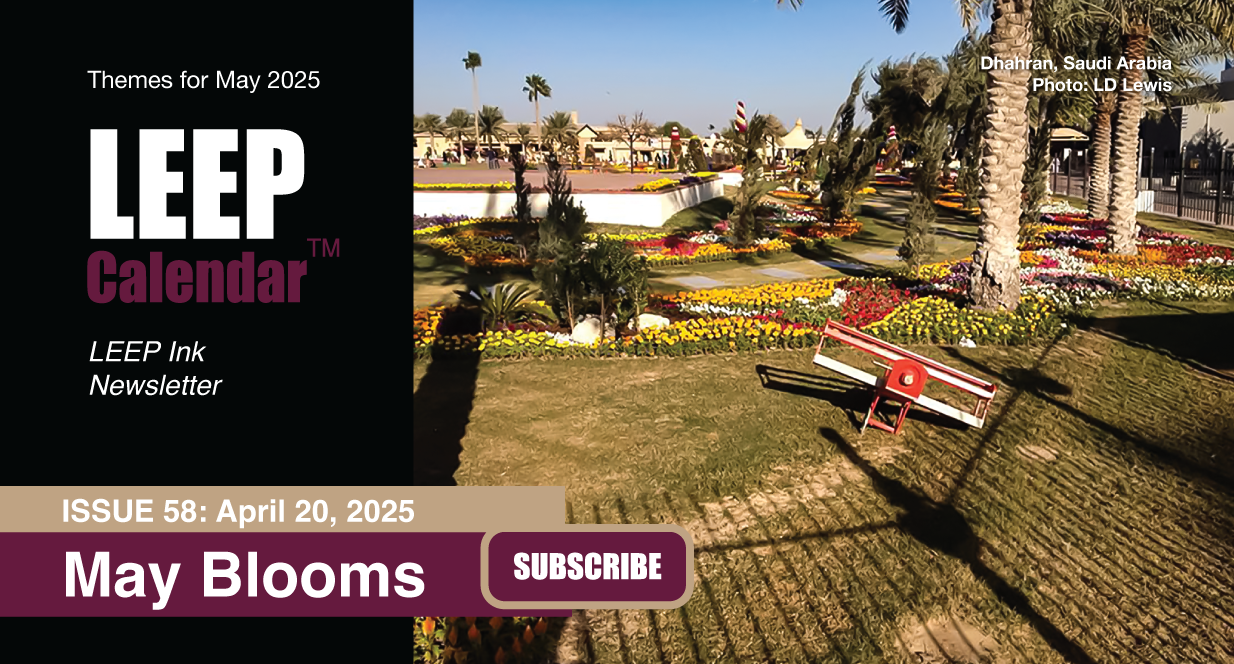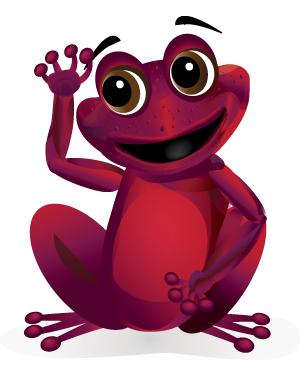 AD
AD
Today is: December 18
Scroll to explore events active on this date.
Additional Events on LEEP
LEEP INK FEATURES

August? Absolutely!
In August, we live through the Dog Days of Summer. It's hot and often humid, and those who can leave for better climates do. Down south, winter is in full force. August is also known as "the ...

In The Heat of July: July 2025 Events
Is it hot enough (or cold enough if you're below the equator) for you yet? There is actually a day for that! Like every month, I pick a diverse collection of events you may or may not know about. This ...

May Blooms: Events in May 2025
Along with October, May is one of the most densely packed months of the year. It's before the summer humidity and the last whole month of the school year. The weather is warming in t...
About Naadam in Mongolia
Sports & Fitness , Politics
China Japan & Korea
Ends: Jul 13, 2025
DESCRIPTION:
NAADAM:
MONGOLIA'S CELEBRATION OF STRENGTH AND HERITAGE
This centuries-old festival blends sport, culture, and independence in the heart of the Mongolian Steppes.
Across the vast grasslands and bustling streets of Mongolia and in every province of Mongolia, the melody of pounding hooves, st-twanging bows, and ancient songs fills the air as the nation celebrates Naadam. Naadam is Mongolia's Independence holiday, celebrated with a vibrant display of its nomadic heritage and national identity.
Annually, from July 11 to 13, Naadam marks Mongolia's independence from Chinese rule in 1921 and its July 1990 elections free of Russian control. However, the games are far older than the dates they represent.
Naadam honors the legacy of the Mongol Empire. Known locally as "eriin gurvan naadam" or "the three games of men," with activities centered on traditional contests of wrestling, horse racing, and archery—sports dating back to the era of Chinggis Khaan (Genghis Khan in Western pronunciation).
During the 13th century, the Great Khans organized competitions to keep their warriors fit and battle-ready. These games gradually evolved into festive gatherings. Under communist rule in the 20th century, Naadam received a rebranding to celebrate the 1921 revolution, but its essence remained steeped in Mongolian identity and pride.
Today, the culminating festivities of Naadam take place in Ulaanbaatar, the capital, at the National Sports Stadium, with elaborate opening ceremonies featuring parades, traditional music, dance, and reenactments of historic battles. Prior to the finals, towns and villages hold regional Naadam games to determine contestants for the capital city's pageants.THE THREE GAMES OF MEN DURING NAADAM
—WRESTLING: The most prestigious of the three sports, wrestling features men in traditional attire called zodog and shuudag, competing in elimination rounds. There are no weight classes—victory occurs when one opponent forces another to touch the ground with any body part other than his feet or hands.
—HORSE RACING: Races can span 15 to 30 kilometers and feature child jockeys, some as young as five, riding semi-wild horses across open terrain. Winning showcases the horse's endurance and training, not just speed.
—ARCHERY: Men and women compete using traditional Mongolian bows, aiming at leather targets set at long distances. The ranking is according to the archer's accuracy and style.
Beyond athletics, Naadam is a time for Mongolians to don traditional clothing (deel), share festive foods such as khuushuur (fried meat pies), and express national unity. In 2010, UNESCO recognized Naadam as part of the Intangible Cultural Heritage of Humanity.
For Mongolians, Naadam exceeds the nomenclature of "holiday"; it's a living expression of Mongolia's nomadic spirit, warrior tradition, and ongoing journey as a sovereign nation.
VIDEOS
SUPPORTING DOCUMENTS
Currently, this event does not have supporting documents.
ADDITIONAL IMAGES
Currently, this event does not have supporting images.
Where would you like to go now?
 AD
AD


/footer-logo.svg)
